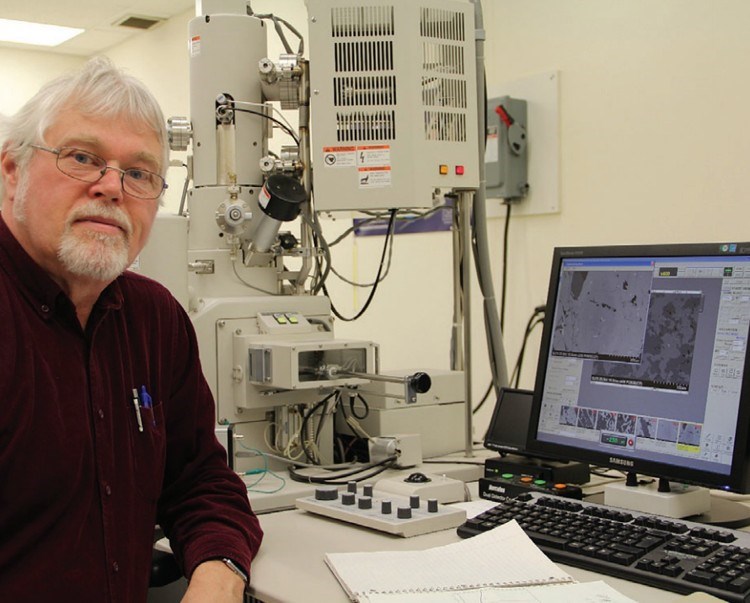THUNDER BAY — A group of scientists including Lakehead University geology professor Phil Fralick has completed a study of 1.4 billion-year-old rocks east of Thunder Bay.
The project, reported Wednesday on Nature.com, was aimed at finding out how much life there was on Earth in prehistoric times compared with today.
The team examined gypsum samples from rocks in the area between Dorion and Kama Hill east of Nipigon.
Gypsum, the white material in wallboard, is a mineral that came out of solution in the ocean and in saline lakes when the water evaporated. It contains oxygen that was in the atmosphere during that period.
Fralick explained that the team devised a way to determine the abundance of life in the past by analyzing isotope ratios in the oxygen.
Oxygen, he said, is given off when plants photosynthesize, and animals breathe it in to burn calories in their bodies.
The ratio of three oxygen isotopes to one another is constant on Earth, but animals and plants interacting with oxygen change the ratios in the atmosphere.
"The more interaction there is with life the more ratios change. So, if we could measure the isotope ratios at a time in the past, we could compare the results to today's atmosphere and see if life on Earth was more or less abundant," Fralick said.
The team concluded that life was far less abundant 1.4 billion years ago, when the most advanced life forms were one-celled organisms such as bacteria, "but it was operating on Earth," he said.
Scientists from ten universities and research institutes around the world participated in the project.
